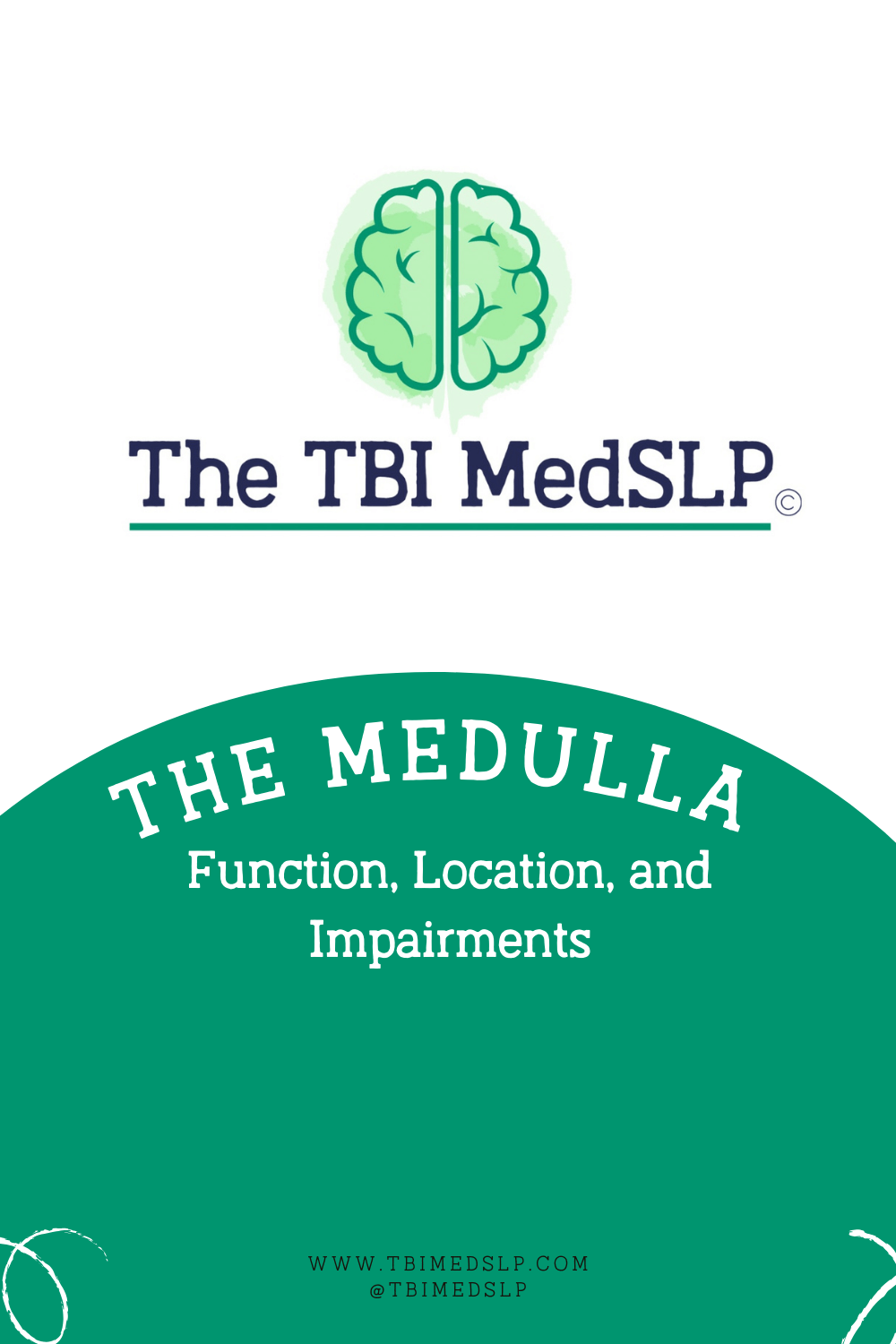The Medulla Oblongata: Understanding its Crucial Function and Hidden Location
The medulla oblongata can be found deep within the brain stem. The medulla serves as a vital control center. It regulates many bodily functions, from breathing and heart rate to swallowing and even sneezing. Yet despite its crucial role in maintaining our overall well-being, the medulla oblongata remains hidden and often overlooked.
In this post, we are diving head-first into the mysterious world of the medulla oblongata. We will uncover its hidden location and discuss its intricate function. We look closer at how this small structure ensures our survival, and how even the slightest dysfunction can have profound consequences on our health.
Anatomy of the Medulla Oblongata
The medulla oblongata is a cone-shaped structure located at the base of the brainstem. It connects the spinal cord to the rest of the brain. It is approximately 3 centimeters long and is the connection between the brain and the spinal cord. Despite its small size, this structure is responsible for a wide range of vital functions that are essential for our survival.
The medulla oblongata consists of both white matter and gray matter. The white matter contains nerve fibers that transmit signals to and from the brain. The gray matter contains various nuclei that serve specific functions. These nuclei include the respiratory centers, cardiovascular centers, and centers responsible for controlling reflexes such as swallowing, coughing, and vomiting.
The medulla oblongata also contains the pyramidal decussation, a crossing point for motor fibers that control voluntary movements. This crossover allows the left side of the brain to control the right side of the body and vice versa. Additionally, the medulla oblongata houses the cranial nerve nuclei. These cranial nerve nuclei are responsible for controlling various sensory and motor functions of the head and neck.
Overall, the anatomy of the medulla oblongata is designed to facilitate the transmission of signals between the brain and the rest of the body, ensuring the smooth functioning of essential bodily processes.
Functions of the Medulla Oblongata
The medulla oblongata plays a crucial role in regulating a wide range of bodily functions that are necessary for our survival. These functions include the control of respiration, heart rate, blood pressure, digestion, and various reflexes.
Role in Autonomic Nervous System Control
One of the primary functions of the medulla oblongata is to control the autonomic nervous system (ANS). The ANS is responsible for regulating involuntary bodily functions that occur without conscious control. These functions include heart rate, blood pressure, and digestion.
Within the medulla oblongata, there are specific nuclei that control the ANS. For example, the cardiovascular centers regulate heart rate and blood pressure. They receive input from various sensory receptors throughout the body and adjust the heart rate and blood pressure to maintain homeostasis.
The respiratory centers within the medulla oblongata control breathing. They adjust the rate and depth of breathing to maintain the right balance of oxygen and carbon dioxide in the body.
The medulla oblongata also controls gastrointestinal functions through its nuclei that regulate digestion and swallowing. These nuclei coordinate the movements of the muscles in the digestive system, ensuring the proper breakdown and absorption of nutrients.
Medulla Oblongata and Vital Reflexes
The medulla oblongata controls several vital reflexes that are necessary for our survival. These reflexes include swallowing, coughing, sneezing, and vomiting.
The swallowing reflex is essential for moving food from the mouth to the stomach. The swallowing center in the medulla oblongata coordinates this by receiving input from sensory receptors in the mouth and throat. This area then coordinates the contraction of the muscles involved in swallowing, allowing us to eat and drink safely. More than 30 nerves and muscles are involved in complex eating and swallowing behaviors, including both voluntary and reflexive activities.
The coughing and sneezing reflexes help protect the respiratory system from potential irritants. When foreign particles or irritants enter the airways, sensory receptors in the respiratory system send signals to the medulla oblongata, triggering a reflexive cough or sneeze. These reflexes help expel the irritants and keep the airways clear.
Vomiting, another vital reflex controlled by the medulla oblongata, helps expel harmful substances from the stomach. When the body detects toxins or irritants in the digestive system, this area in the medulla oblongata initiates a series of coordinated muscle contractions that result in the expulsion of the stomach contents.
The medulla oblongata's control over these vital reflexes highlights its crucial role in protecting our respiratory and digestive systems.
Disorders and Conditions Affecting the Medulla Oblongata
Despite its importance, various disorders and conditions can affect the medulla oblongata and disrupt its normal functioning. These conditions can range from congenital abnormalities to acquired diseases and injuries.
One example of a congenital condition affecting the medulla oblongata is Chiari malformation. This condition occurs when the lower part of the cerebellum extends into the space normally occupied by the spinal cord. The compression caused by the displaced cerebellum can affect the functioning of the medulla oblongata, leading to symptoms such as headaches, difficulty swallowing, and problems with coordination.
Acquired conditions that can affect the medulla oblongata include strokes, tumors, and infections. When a stroke occurs in the medulla oblongata, the blood supply to this vital structure is disrupted. This leads to a range of symptoms depending on the severity and location of the stroke. Symptoms may include difficulty breathing, problems with heart rate and blood pressure regulation, and impaired reflexes.
Tumors that develop in or near the medulla oblongata can also cause significant disruptions to its normal functioning. As the tumor grows, it can compress the surrounding structures, leading to symptoms such as difficulty swallowing, changes in heart rate and blood pressure, and coordination problems.
Infections, such as meningitis or encephalitis, can also affect the medulla oblongata. These infections can cause inflammation of the brainstem, leading to symptoms such as fever, headache, and impaired motor function.
Disorders and conditions affecting the medulla oblongata can have a significant impact on our health and well-being. Prompt diagnosis and appropriate treatment are essential for managing these conditions and minimizing their effects.
Diagnosis and Treatment Options for Medulla Oblongata Issues
Diagnosing issues related to the medulla oblongata can be challenging. This is due to its hidden location and the variety of functions it controls. With advancements in medical imaging technology and diagnostic techniques, healthcare professionals can now better assess the health of this critical structure.
Imaging techniques such as magnetic resonance imaging (MRI) and computed tomography (CT) scans can provide detailed images of the brainstem. This allows healthcare professionals to identify abnormalities or lesions affecting the medulla oblongata. These scans can help diagnose conditions such as tumors, strokes, and structural abnormalities.
Sometimes, more tests are needed to check the functioning of the medulla oblongata. correctly. These tests may include respiratory function tests, cardiovascular assessments, and swallowing evaluations. These tests can reveal valuable information about the specific functions that may be impacted and guide treatment decisions.
Treatment options for medulla oblongata issues depend on the underlying condition or disorder. In some cases, medications may be prescribed to manage symptoms or address the underlying cause of the problem. For example, if a stroke has affected the functioning of the medulla oblongata, medications to control blood pressure and prevent further strokes may be prescribed by a physician.
In more severe cases, surgical interventions may be necessary. Surgery may be performed to remove tumors or correct structural abnormalities. The specific surgical approach will depend on the individual case and the underlying condition.
It is important to note that treatment options for medulla oblongata issues are highly specialized. These options require the expertise of healthcare professionals with knowledge and experience in neurology and neurosurgery. Seeking prompt medical attention and working with a healthcare team are crucial for managing these conditions.
Importance of Maintaining a Healthy Medulla Oblongata
The medulla oblongata plays a large role in maintaining our health and well-being. Its control over essential bodily functions such as respiration, heart rate, and digestion ensures our survival daily. It is crucial to prioritize the health of the medulla oblongata and take steps to maintain its optimal functioning.
One of the key ways to support the health of the medulla oblongata is by adopting a healthy lifestyle. Regular exercise, a balanced diet, and adequate sleep can contribute to overall brain health and optimize the functioning of the medulla oblongata.
Avoiding behaviors that can harm the medulla oblongata is also important. It is recommended to limit the intake of substances such as alcohol and tobacco, which can have damaging effects on the brain and nervous system.
Regular check-ups with healthcare professionals are essential for monitoring the health of the medulla oblongata. Routine screenings, such as blood pressure checks and respiratory function tests, can help detect any early signs of dysfunction and allow for timely intervention.
By prioritizing the health of the medulla oblongata, we can ensure that this hidden powerhouse continues to function optimally.
Interesting Facts about the Medulla Oblongata
The medulla oblongata is part of the hindbrain. The hindbrain also includes the pons and the cerebellum.
Together, these structures play a vital role in:
coordinating movement
maintaining balance
controlling essential bodily functions
Despite its small size, the medulla oblongata contains approximately 100 million neurons. This makes it a densely packed and highly specialized structure.
The medulla oblongata is often referred to as the "primitive brain" due to its involvement in basic survival functions that are essential for all vertebrates.
In addition to its role in controlling essential bodily functions, the medulla oblongata is also involved in the perception of pain and controlling the sleep-wake cycle.
Damage to the medulla oblongata can result in a condition known as locked-in syndrome, where individuals are awake and aware but unable to move or communicate due to severe paralysis.
In conclusion, the medulla oblongata is hidden deep within the brainstem. It is a small yet critical structure responsible for controlling a variety of essential bodily functions. From regulating respiration and heart rate to coordinating vital reflexes, the medulla oblongata ensures our survival daily. Disorders and conditions affecting this area of the brain can have profound consequences on our health, making it essential to prioritize its well-being.




